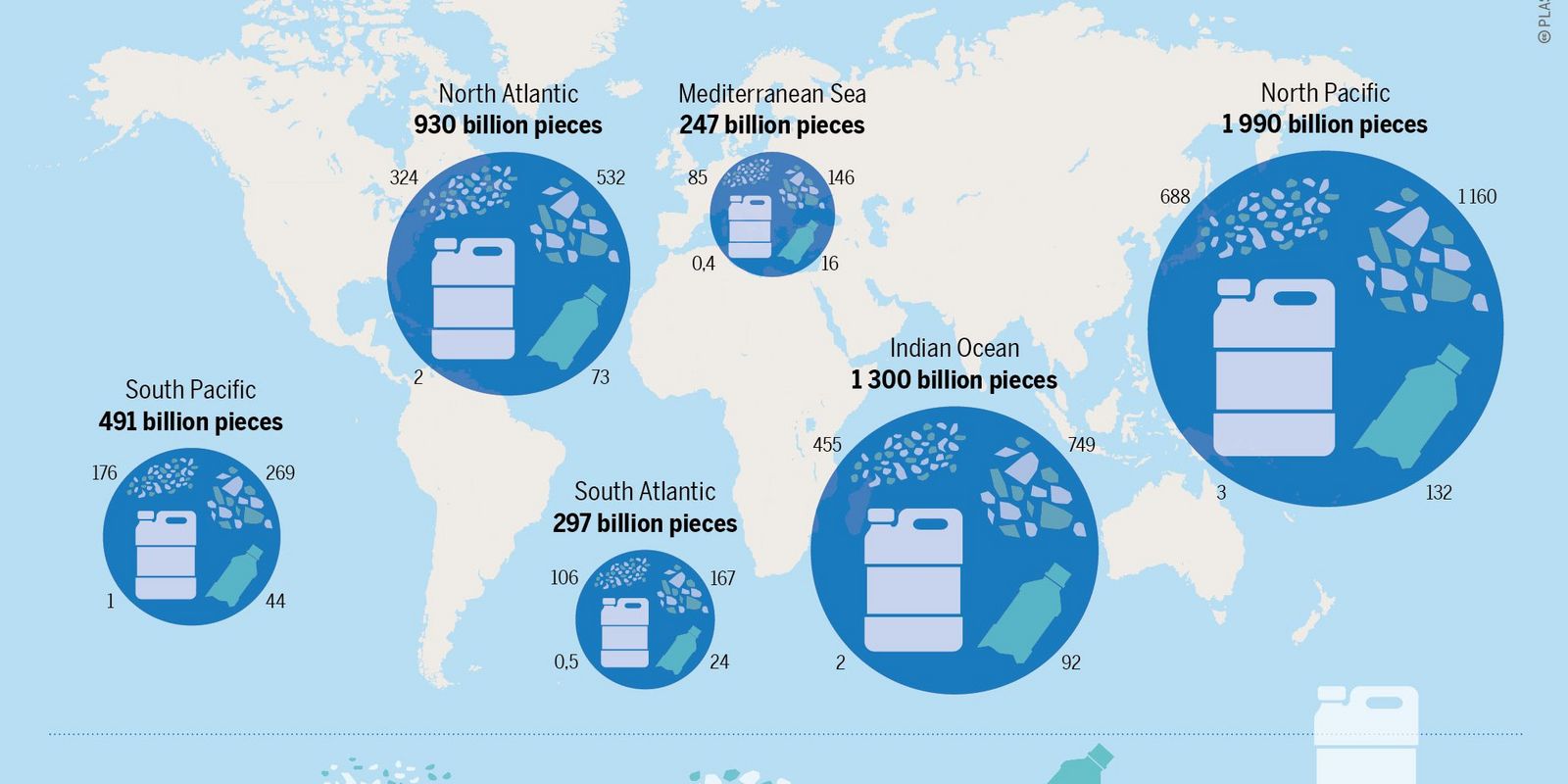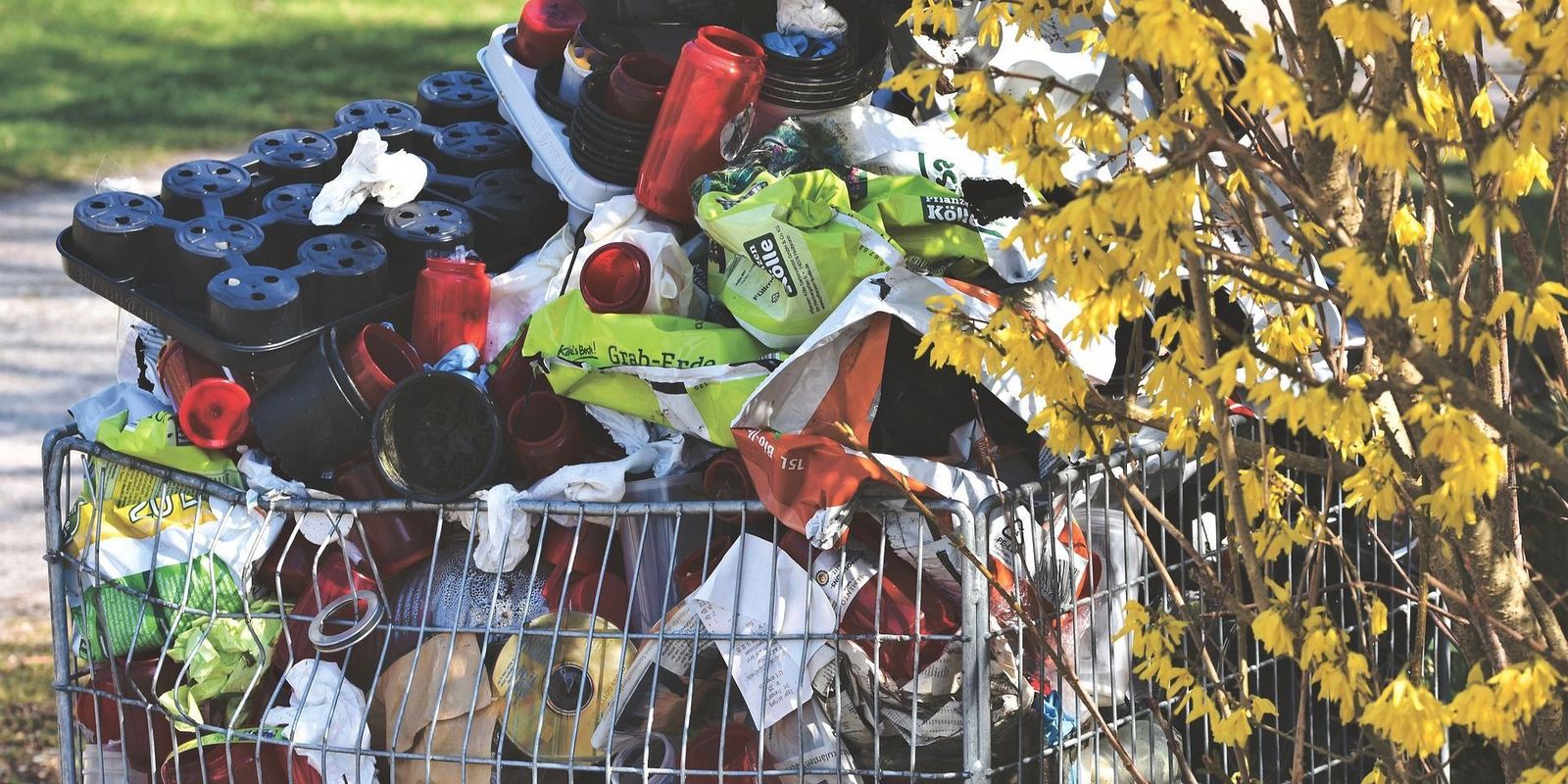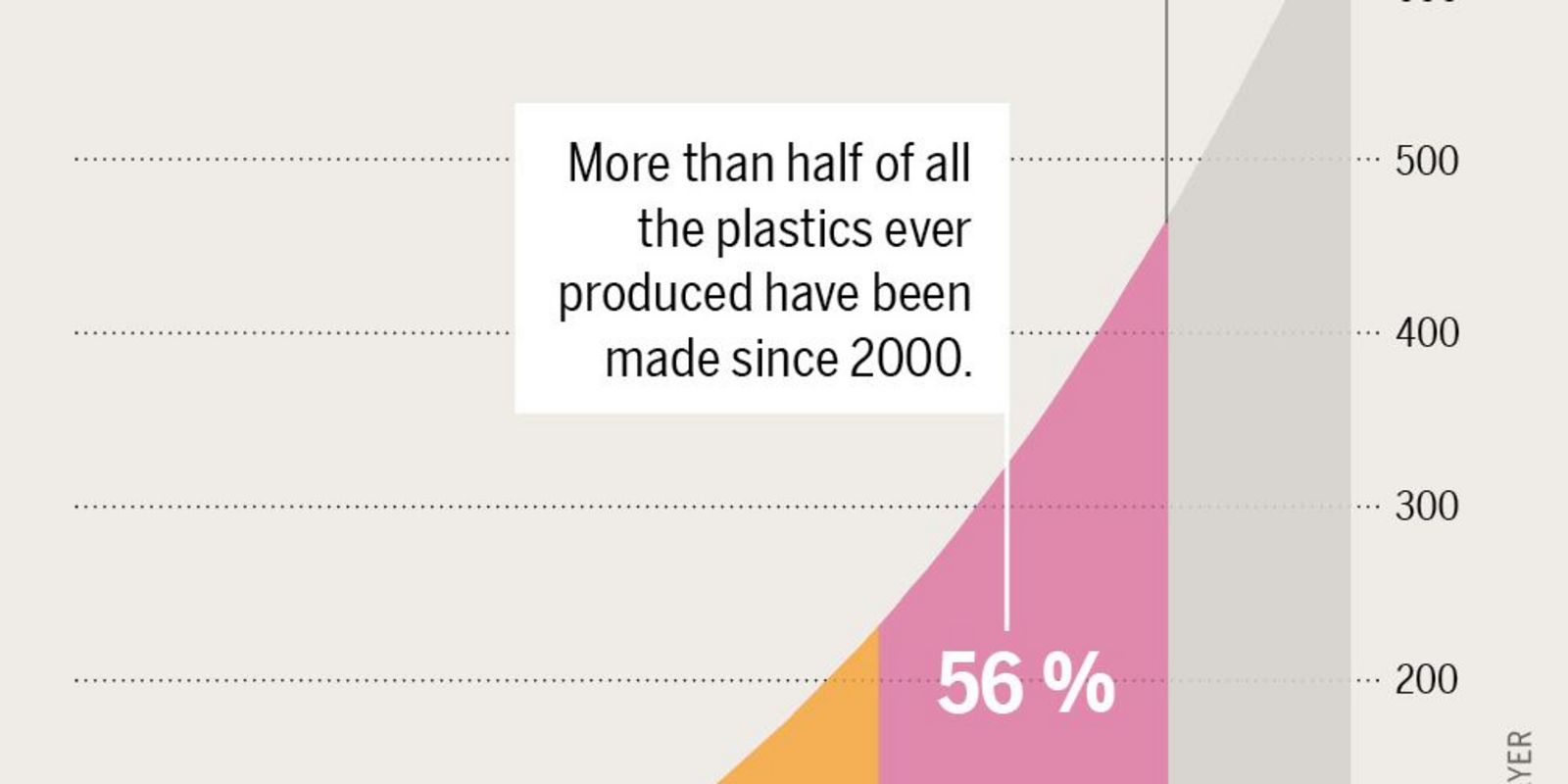The mass distribution of plastic began in 1950. In that year, about two million tonnes of plastic were produced worldwide. The fact that packaging and bottles could end up in the rubbish bin after use instead of being reused helped the industry simplify its supply chains and save money. But it was also the start of today’s throwaway mentality.
The figure has since risen to 400 million tonnes per year, according to Plastikatlas published by the Heinrich Böll Foundation in 2019. The online magazine klimareporter.de calculates that there are currently more than 8.3 billion tonnes of plastic on the planet – more than a tonne per person. And our current consumer behaviour is pushing forecasts up dramatically, especially for disposable plastic.
Plastics accelerate global warming
Plastic consists of fossil raw materials that have to be extracted, refined, processed and transported. All this is very energy-intensive and releases huge amounts of greenhouse gases such as carbon dioxide and methane. Large quantities of latter are produced when the plastic is burned, too. And plastic that ends up in the sea is also harmful to the climate. Plankton normally absorb carbon dioxide at the surface and release it back into the deep sea, so oceans have an important part to play in contributing to a stable climate on Earth. But according to Plastikatlas, the plastic in the sea that has disintegrated into microparticles can disrupt this natural process.
Plastic carpets three times the size of France
The Heinrich Böll Foundation comes to the conclusion that by 2018 some 86 million tonnes of plastic waste will have been released into the oceans. According to Greenpeace, up to 13 million tonnes of plastic are added each year, i.e. an entire truck load every minute. The plastic in the sea and on the beaches injures and kills marine animals and birds – not least because they mistake it for food.

In addition, the plastic in the sea is not broken down but only shredded – into microplastics. This “decay” takes a very long time, as demonstrated by figures published by the German Environment Agency:
- Plastic bag: 20 years
- Styrofoam cup: 50 years
- Disposable nappy: 460 years
- Fishing line: 600 years
- Plastic bottle: 600 years
Microplastics spread everywhere and collect in particular in five huge swirls of garbage in the oceans. The largest of these is now three times the size of France.
Plastic is deposited in soil and finds its way into food
The soil is also heavily polluted with plastic particles, too: as a result of littering, materials used in agriculture and construction, and also microplastics which are produced by tyre abrasion on the roads, for example, and carried overland by the wind. Microplastics then accumulate in the soil, remain there for several centuries and change its structure. This has a negative impact on the microorganisms and earthworms that are so vital to soil fertility.
Moreover, microplastics attract other pollutants like a magnet and enter the food chain along with them. They can be absorbed by humans and animals and, according to the German Federal Office for the Environment, they have already been detected in food such as fish, mussels, sugar and honey – as well as in the human body itself.

« Not even 10% of the plastic ever produced in the world has been recycled. »
Plastic impacts on health
Plastics are a health risk – and not just those in our food chain. They contain lots of added chemicals such as plasticisers, dyes and flame retardants. Many additives can escape from the material over time, accumulate in ambient air and house dust and enter the body by means of inhaling or through the skin. According to Plastikatlas, the leaked substances – especially the plasticisers – can trigger all kinds of diseases from ADHD to immune and nervous disorders, diabetes and infertility.
There is no such thing as eco-friendly plastics disposal
According to Plastikatlas, about 40% of our plastic products become waste again after less than a month. Unfortunately, however, there is no such thing as eco-friendly plastics disposal. Recycling would be desirable but quickly reaches the limits of technical feasibility – partly because of the many chemical additives. For this reason much of it is incinerated – producing not just a lot of CO2 but also numerous pollutants that are hardly broken down by the environment and can cause further disease in human beings.

We are left sitting on our plastic waste
Because too much plastic waste is produced, its export has actually become a worldwide business. Since 1988 about half the global plastic waste has been exported to China, where it is melted and processed into pellets for reuse. Since 2018, most global waste streams have been directed to Thailand, Vietnam, Malaysia and Indonesia. But as import regulations generally become more rigorous, the exporting countries – primarily the industrialised countries – are increasingly left sitting on their own waste. As a result, it is usually incinerated or disposed of in landfills instead of being recycled.
« The problem of disposal is becoming more acute as increasing quantities of plastic are produced every year: Plastikatlas estimates that by 2025 over 600 million tonnes of plastic will be produced per year. »
Bio-plastic as the solution?
So what can be done? There are already “biodegradable” plastics made of various materials, including plant material. But degradation only works under exactly the right conditions (temperature, microorganisms, etc.) and requires industrial fermentation or composting plants. Since neither nutrients or humus can be extracted from them, such plastics are usually burned so as to “at least” obtain thermal energy.
In addition to biodegradable plastics, there are also “bio-based” plastics: these are made of natural, renewable materials such as sugar cane, corn or palm leaves. But here too, the eco-friendly aspect is not clear: the raw materials are processed into basic chemical substances by means of large-scale industrial processes and their decomposition takes an extremely long time.
So what can you do? The most sensible course of action is to replace plastic products with alternatives as far as possible. You will find some suggestions in this article. And we can only hope that science and industry will come up with new methods and materials that are intelligent and promising.
Sources:
Bafu
Deutsches Umweltbundesamt, Infografik «So lange bleibt der Müll im Meer», 2016
Plastikatlas der Heinrich Böll-Stiftung von 2019

Your comment